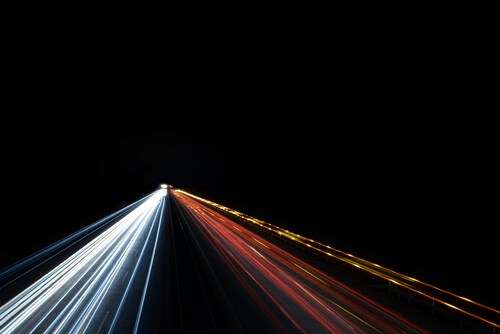The 1.5f8-p1uzt texture is a cutting-edge digital substance that has been extensively studied across industries. This texture has become the standard in places that demand visual realism since it possesses realistic properties that other textures cannot match. Professionals utilize the 1.5f8-p1uzt texture to create more realistic and lifelike experiences in a wide range of areas, including digital design, virtual reality, architecture, and gaming. In this essay, we will look at the 1.5f8-p1uzt texture’s applications, development process, and future potential.
What is the 1.5f8-p1uzt texture?
1.5f8-p1uzt texture: a high-definition digital surface texture inspired by natural colors and textures. What distinguishes it is its attention to detail, which allows for clear and realistic close-ups. Its texture is used in industries that rely on creating realistic digital environments, such as virtual spaces, infographics, and product visualization.
1.5f8-p1uzt Texture Applications in Important Fields.
Increase the usage of virtual reality (VR) and augmented reality (AR).
The 1.5f8-p1uzt texture is commonly used to create virtual worlds. Textures are vital for creating visually appealing scenes in VR and AR. When developers strive to replicate real-world materials, this reusable texture makes environments even more realistic and lifelike. The degree of realism increases user engagement, making VR and AR experiences appear more real. In VR gaming, texture creates realistic scenery, avatars, and things, providing a more immersive experience.
Gaming and animation
The 1.5f8-p1uzt texture is widely used in gaming and animation because it enables more detailed textures to be added to characters, landscapes, and game worlds. With this texture introduced, developers can now construct extremely detailed models and surroundings, resulting in games that look and feel more realistic. Its capacity to improve animated graphics allows animators to create high-quality scenes that compete with real-world shots. Texture gives depth and realism to scenes in video games and movies, immersing audiences.
Architectural Visualisation
Architects and designers use the 1.5f8-p1uzt texture to create architectural and interior renderings. In architectural visualization, we rely on high-quality textures to represent material qualities like wood, stone, metal, or glass. This enables the architect to present their design in a more accurate manner, allowing the client to have a more comprehensive understanding of the finished project. This is especially important for high-stakes projects that require precise material selection and aesthetics.
Design products and prototypes
The 1.5f8-p1uzt texture is also used during the prototyping phase by product designers. This level of precision enables them to produce accurate digital reproductions of products that are nearly identical to the original. This prevents design misunderstanding and misinterpretation because the designs are then visualised on a screen, and if the project has many content kinds, each must be described. The texture’s level of detail allows for easy simulation of finishes, textures, and aesthetics, displaying the product’s entire appearance.
The Difficulty of Using the 1.5f8-p1uzt Texture
The 1.5f8-p1uzt texture offers numerous advantages, but it also presents some issues. Its main disadvantage is that it is computationally intensive. This level of detail built into this texture necessitates strong technology for rendering, particularly in real-time applications like gaming and VR. To achieve the greatest experience in locations with limited processing resources, developers should optimize their systems or reduce the texture resolution. Another challenge arises when attempting to effortlessly combine such extremely detailed textures into larger designs. Designers must carefully balance the use of the 1.5f8-p1uzt texture to avoid detracting from other components of the design.
How to create the 1.5f8-p1uzt texture
We employ complex digital modeling and rendering procedures to develop the 1.5f8-p1uzt texture. These unique texture maps are often developed and polished with complex software programs such as Blender, Substance Painter, and Autodesk Maya, which are popular among designers and artists. These tools enable artists to blend many layers of material, modifying properties such as color, reflectivity, and texture pattern. Artists also use light and shadow to bring realism to life, altering every detail to match how materials seem in the actual world.
The process of developing this may be difficult and labor-intensive, therefore a thorough understanding of system software as well as the mediums to be imitated is required. [7] Designers usually spend a lot of time experimenting with various rendering processes and making modifications to ensure that the texture fits with their desired outcome.
1.5f8-P1uzt Texture: The Future
With technological advancements, the 1.5f8-p1uzt texture will only gain appeal in the area of digital design. Increased computational power and better software tools will make it easier to integrate high-detail textures into real-time applications like gaming and virtual environments. Assets such as 1.5f8-p1uzt will benefit from real-time ray tracing and more efficient GPUs, improving both quality and access. Realistic textures can substantially aid the gaming, virtual reality, and product design sectors, among other fields. As technology improved, design software became more accessible to smaller studios, leading to its adoption in several industries.
Conclusion
The 1.5f8-p1uzt texture is one of the most complex and versatile digital textures available today. Its applications span a wide range of industries, from virtual reality and gaming to architecture and product design. Its great degree of detail makes things difficult at times, but photogrammetry’s benefits in terms of realism and visual fidelity make it an indispensable tool in the professional toolkit. Dr byte free download Quran hundred isq ted dfx Tere ke nau haas mini toad class action lawsuit zillow.
